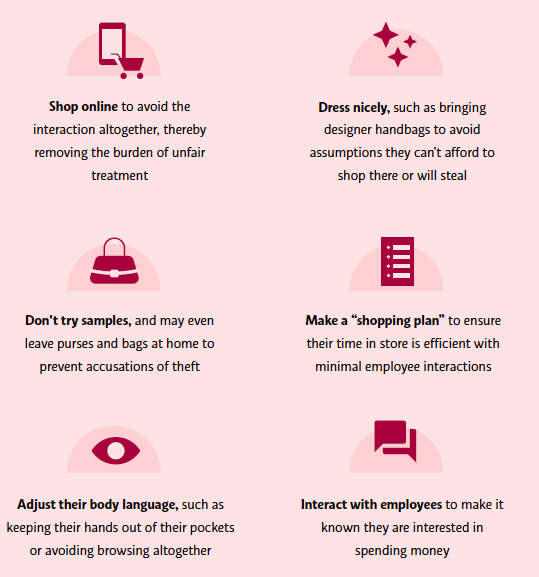Sephora Announces Action Plan to Address Racial Bias in Retail
As the country continues to grapple with racial inequality, Sephora is ready to address it head on.
Arguably the biggest beauty destination for millions of Americans, the retail chain spent the last few years researching the ways in which racial biases appear across the company. Now it’s sharing the results of its first National Bias in Retail Study—and more importantly, what the company plans to do to address the problems highlighted in it.
“We’re proud to serve and celebrate diverse clientele and unique beauty everyday,” says Deborah Yeh, Sephora’s chief marketing officer. “But we recognize that racism and unfair treatment exists broadly in our society. One organization alone can’t fix this problem. But as a retailer with hundreds of stores and thousands of employees, and millions of clients, Sephora is in a strong position to make our own positive changes. ”
One of the key takeaways is how race impacts the types of treatment shoppers are likely to receive from retail employees. While Black and Asian shoppers felt their in-store interactions were driven by their skin color or ethnicity, Black shoppers were three times more likely to feel judged based on the color of their skin. Meanwhile, white shoppers cited age and attractiveness as grounds for any discrimination they face. Despite the mistreatment, only 13% of BIPOC shoppers were likely to report it, likely for fear of gaslighting or retaliation. And it’s not just consumers who reported feeling unwelcome—or worse, fearful: One in three employees who work in retail thought about quitting due to racial bias and unfair treatment they experience on the job.
On the whole, the study reports that BIPOC shoppers entering retail stores across the U.S. felt “passed off” and overlooked by staff, while at the same time felt rightfully defensive when they received selective attention in the form of being followed around the store, sometimes even accused of theft. “This really boils down to real people, Black and brown people, and our experiences every day,” says April Reign, founder of the Oscars So White movement and Sephora Equity Advisor. “Every single day we walk into retail environments around the country, and sometimes those experiences are shaped by racial bias. The results of that can range from uncomfortable all to the way to deadly.”
To avoid the unwanted attention, people of color have developed coping mechanisms like dressing particularly nice before heading out and going out of their way to engage with employees to avoid any suspicions. Others however, simply opt out of in-person retail altogether, preferring to shop online without the mental stress.

With the facts laid out, Sephora worked on developing a set of criteria and practices that specifically respond to them. “Sephora’s action plan is going to be focused on three core areas of our businesses: marketing and merchandising, retail experience and operations, and talent and inclusive workplaces,” says Yeh. To address racial bias on the sales floor, Sephora will require new training modules for all beauty advisors that “better defines what client engagement should look like and, frankly, what behaviors will not be tolerated,” says Yeh.
A new greeting system across all stores will also be implemented to “ensure a more consistent experience for all store visitors upon entry.” While 81% of retail employees recognize the importance of being able to service diverse shopper needs, the study found that only 27%—fewer than one in three—feel they can actually meet those needs. With more nuanced systems in place, covering things like voice inflections, the company is working to make sure shoppers feel welcomed and valued.
Another huge shift will be in Sephora’s reducing the presence of in-store third-party security vendors, instead opting to work more with in-house specialists. To monitor progress, the company will make sure improved feedback mechanisms are easily accessible on the site and app, so that purchasers—and just as importantly, nonpurchasers—can share their experiences.
“As someone who has spent my career working at the intersection of justice and equity, I can say this is a big deal,” says Joshua Dubois, founder of Values Partnerships, a leading social-impact agency that has spent the past two years working with Sephora on its programming centering around diversity, equity, and inclusion. “To make progress on tackling the racial bias that occurs in retail settings and to eventually get it right, that would be a substantial step forward in our long, national journey on race.”
The work doesn’t stop there. Sephora’s action plan goes beyond customer relations. In addition to making sure its stores are an inclusive space for all shoppers, the chain will continue to build on its 15% pledge from last summer, through which the company committed to dedicating 15% of its shelf-space to Black-owned brands. “We are committed to doubling our assortment of Black-owned brands by the end of 2021,” says Artemis Patrick, EVP and global chief merchandising officer at Sephora. “And going forward, we have completely pivoted our Accelerate grant incubator program to focus on cultivating and growing Black-founded and -owned beauty brands.”
Given Sephora’s presence in the beauty community and being almost a second home for skin-care enthusiasts and lovers of all things makeup, the company’s dedication to improving its culture and striving to provide the best atmosphere for its clients is something all brands should take note of.
“With everything going on in the country today, from the summer of racial reconciliation to what’s happening in Washington, D.C., this time is historic,” says Reign. “If we get this right, we can look back and say that the retail experience for communities of color is fundamentally different than it was in the past. That will make people safer, happier, and ultimately able to live with more dignity and joy.”
Michella Oré is a beauty assistant at Glamour. Follow her on Instagram @michellaor.
Originally Appeared on Glamour
